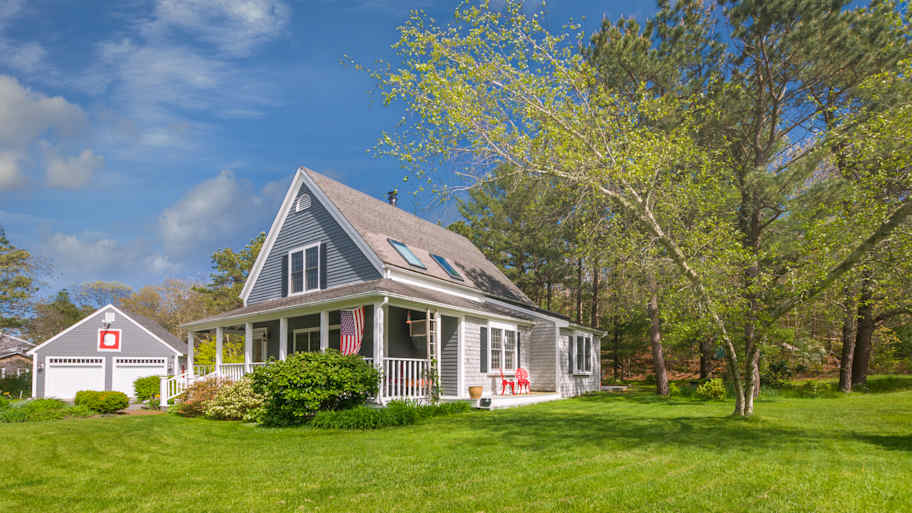
The cost to reseed a lawn can vary depending on the size of your yard and the condition of the soil. We’ll help you figure out the true cost of reseeding or overseeding your lawn, along with whether or not you should hire a professional.
You don’t have to settle for a patchy lawn


An emerald green lawn is the envy of the neighborhood, but what if your grass is brown, dry, or mostly dead? If you’ve gotten to the point where your lawn has become an eyesore, it may be time to reseed your entire lawn.
While this can be a time commitment, the results will last for years to come.
In general, the best time to reseed a new lawn is late summer to early fall. Reseeding during this time is ideal because:
The soil will be warm enough to support seed germination
Weeds won’t be growing as rampant, so your new seeds won’t have to compete
There will be enough time for the grass to grow before the first frost
Depending on your climate and growing season, it is also possible to reseed your lawn in early spring. Spring offers more moisture and warmer air than fall, which is great for both grass and weed germination. That means your lawn will have to compete with those weeds for nutrients—competition you can avoid by reseeding in late summer or early fall.
Whether you have warm- or cool-season grass, try to reseed in the morning and whenever the ground is dry. Be sure not to reseed right before heavy rains; pooling or moving water will wipe away your soil (and your efforts) by disrupting germination. You can reseed after a storm, but you’ll have an easier time if you wait until the ground has dried. Avoid reseeding on windy days, too, as gusts could unevenly distribute the seeds.
Reseeding a lawn is a multi-step process. Follow the reseeding tips below to make it easier and to ensure you get the job done right.
Remove dead grass: Dead grass makes it harder for seeds to grow
Level compost: smooth out any bumps with your rake to ensure an even surface
Mix it up: Create and dampen your sand-and-seed mixture one day before sowing
Cover and water: Lightly water the compost; overwatering will wash away your seeds
Maintain moisture: Lightly water a couple of times per day until your seeds germinate
To successfully reseed your lawn, you will want these tools on hand:
Landscape rake
Thatch or turf rake
Seed spreader
Grass seed
Sprinkler or a hose
Sod roller
Tiller
You’ll first want to determine how much of your lawn needs reseeding and whether you can patch the lawn by simply overseeding instead.
If you determine that most of your lawn needs to be completely reseeding—for example, due to soil fungus or other diseases—you’ll need to remove all the existing grass and start with fresh soil.
You’ll also want to even out any depressions on your lawn. It is also important to make sure you reseed with the right kind of seeds for your growing conditions.
Choose the right grass for your region. Some grasses can’t thrive in areas that are too hot, too cool, or too dry.
After you finish reseeding your lawn, you still have a few tasks to follow to make sure it grows well.
Water: Be sure to maintain a regular watering schedule. After initially watering two to three times per day, stick to your regular watering schedule once you see growth.
Fertilize: Be sure to find out which fertilizer for grass is best for your lawn. In most cases, you’ll likely want a fertilizer with a high nitrogen and potassium percentage with a bit of phosphorus. Quick-release fertilizers are the best choice.
Wait to mow: Don’t mow until you see considerable growth.
For the best results, avoid these common reseeding mistakes.
Planting the wrong type of seed for your region
Skipping a soil test
Planting an improper amount of seeds; overdoing it is the most common mistake.
Planting during the wrong season
Using fertilizer too soon after reseeding
Overwatering
Mowing too soon
Applying weed treatments with seed

When it comes to dead and mostly brown or patchy lawn, reseeding is often the only way to restore your grass to its former glory. Reseeding a lawn costs an average of $0.10 to $0.20 per square foot to reseed a lawn, excluding labor costs. Labor costs can factor in significantly for reseeding and average between $250 to $350. This amount does not include the cost of removing the dead grass.
Not sure what to do about your lawn? Find a local lawn care professional near you to get an experienced opinion.
From average costs to expert advice, get all the answers you need to get your job done.

The cost to reseed a lawn can vary depending on the size of your yard and the condition of the soil. We’ll help you figure out the true cost of reseeding or overseeding your lawn, along with whether or not you should hire a professional.

Your total lawn care cost depends on several factors, including the type of service and lawn size. Our guide will cover what you can expect to pay for lawn care.

Artificial grass is a low-maintenance alternative to traditional turf. Learn how much artificial grass installation costs and what affects your price.

Discover 11 expert lawn mowing tips to keep your yard healthy, green, and looking sharp. Learn when it's best to hire a professional.

You can find dozens of different mushrooms in your yard, but they’re not all safe to let grow. Learn more about identifying common yard mushrooms.

Fescue grasses are among the top choices for northern and central lawns in the U.S. This hardy, dependable turf grass is a go-to from Montana to Missouri.